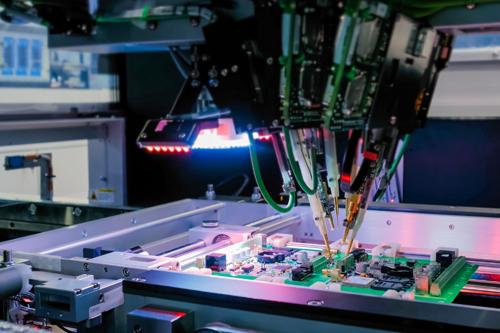How to Find the Right Circuit Board Manufacturer for Your Next Project

Printed circuit boards or PCBs are
fiberglass boards that act as the foundation for building electronics. They
allow components like integrated circuits, resistors, capacitors, and
connectors to be mounted and interconnected through copper traces etched into
the board. PCBs provide mechanical support and the electrical connections
necessary for an electronic device to function. A printed circuit board manufacturer is
the one who makes these boards.
PCBs revolutionized electronics and
manufacturing, allowing complex circuits to be efficiently produced at scale.
Before PCBs, electronic products had to be assembled mostly by hand, wiring
individual components together. The invention of the PCB enabled automated
assembly and greatly reduced the size and cost of electronics. Today, almost
every electronic device contains one or more custom PCBs.
Let’s discuss how to select the right circuit board
manufacturer:
Find out Your PCB Specifications
When choosing a PCB manufacturer, the first
step is determining your specific PCB requirements. This will allow you to find
a manufacturer capable of producing boards that meet your needs. Consider the
following specifications:
- Number of layers - Simple boards may only require a single-sided or double-sided PCB,
while complex boards can have 6+ layers. The number of layers impacts the capabilities
needed.
- Board thickness - Standard thickness is 1.6mm, but thicker boards provide more
rigidity while thinner boards allow tighter spacing. Define your ideal
thickness.
- Materials - FR-4 glass epoxy is standard, but PCB substrates like Rogers,
polyimide, and aluminum are options. Specify any special materials.
- Component types - Through-hole, surface-mount, BGAs, fine-pitch parts, etc. Outline
the components used.
- Quantity needed - Prototyping 10 boards is vastly different from full production of
10,000 boards. Provide manufacturing volumes.
- Size and shape - Maximum dimensions, any irregular board geometries. Small boards
under 25 square inches have different requirements.
- Layer stackup - For multilayer boards, the layer sequence must be defined. Review
impedance control needs too.
- Hole sizes - The minimum drill diameter and smallest holes or vias required.
Small holes under 8 mils need special capabilities.
- Tolerances - How tight are the tolerances for traces, holes, and features?
Tighter tolerances demand more capabilities.
- Finishes -
Specify surface finishes like ENIG, immersion tin, or gold, along with
thickness.
Detailing your specifications will allow
manufacturers to assess if they can meet your PCB fabrication and assembly
requirements.
Evaluate the Manufacturer's Capabilities
When choosing a PCB manufacturer, you'll
want to make sure their capabilities match your design requirements. Here are
some key factors to consider:
Available Design Rules
Design rules dictate the minimum spacing
and size your PCB layout must adhere to. More advanced manufacturers will
support tighter design rules, allowing you to produce more compact and dense
circuit boards. For example, the PCB design rules may specify:
- Minimum trace width and spacing
- Minimum via diameter and drill size
- Minimum clearance between copper and
board edge
- Minimum annular ring size for vias
Tighter design rules allow for greater
routing flexibility and optimization. Make sure the manufacturer can meet your
required design rules.
Embedding and HDI Technologies
For further miniaturization and improved
performance, many PCBs are moving toward embedded component technology and
high-density interconnect (HDI).
Key considerations include:
- Embedded passives and actives
- Blind and buried vias
- Microvias
- Thin core and thin dielectric materials
- Fine dense lines and spaces
Manufacturers proficient with the latest
HDI processes can enable greater reliability, thinner profiles, improved
electrical performance, and reduced costs.
Tolerances and Capability Index (Cpk)
The manufacturer's tolerances indicate how
consistently they can produce quality PCBs within your specifications. Tighter
tolerances mean less variance and more repeatable results.
Ask about their capability index (Cpk)
for key tolerances like:
- Dielectric thickness
- Copper thickness
- Hole size/location
- Line width/spacing
Higher Cpk numbers represent better process
control and consistency. A Cpk of 1.33 or higher is generally considered
excellent.
Check Reviews and Reputation
When evaluating PCB manufacturers, be sure
to check out reviews and testimonials from past customers. This can give you a
good sense of the company's reputation, quality of products, and customer
service.
Look on sites like Google Reviews and Yelp
to see what experiences other customers have had. Pay attention to how the
company responds to reviews as well, do they take accountability for mistakes
and make efforts to improve? A transparent, thoughtful response is a good sign.
You may also want to ask the manufacturer
for product samples or customer references. Most reputable companies will be
happy to provide examples of finished boards or put you in touch with current
customers who can vouch for their work. Seeing the quality first-hand and
hearing directly from other customers can give you confidence in the
manufacturer.
It's also a good idea to ask about customer
satisfaction guarantees or other indicators of their commitment to quality. For
example, some manufacturers may offer money-back guarantees, free remakes of
defective boards, or on-time delivery guarantees. These types of assurances can
give you peace of mind when choosing a PCB partner.
All in all, taking the time to research
reviews, testimonials, and reputation will help ensure you choose a printed
circuit board manufacturer that consistently delivers high-quality boards
and good customer service. This due diligence on the front end can prevent
headaches later on.










Comments